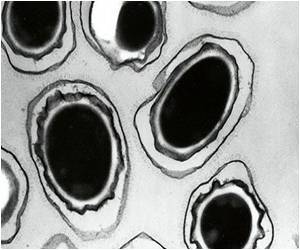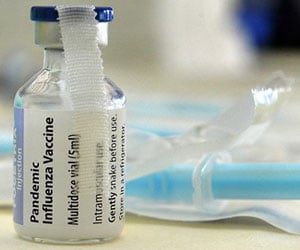The revelation reveals the problem of handling anthrax samples, which were supposed to be rendered inactive by irradiation at the US Army facility in Utah.

Military and health officials launched a probe after a commercial lab in Maryland last week found a live sample of anthrax in a shipment from the army’s Dugway Proving Ground, near Salt Lake City.
The Pentagon acknowledged on Thursday that at least 18 government, university and commercial laboratories received suspected live samples of anthrax from a batch irradiated in March 2014.
Samples from that batch were distributed to various labs for research in nine states as well as at the US military’s Osan air base in South Korea. But on Friday, officials said the investigation turned up another batch of live anthrax, which was meant to be made inactive or "dead" in 2008.
It was not clear precisely when samples from the 2008 batch were sent out or where the samples were sent, other than Australia, officials said. "We are still trying to figure out where the samples were sent," a US official who spoke on condition of anonymity said.
Australia’s Foreign Minister Julie Bishop welcomed the investigation by the US into the shipment. "We are taking part in the investigation and I am pleased it is underway," she said.
Advertisement
Four lab workers in the states of Texas, Delaware and Wisconsin had been put on antibiotics as a precaution, according to the Centers for Disease Control (CDC).
Advertisement
The anthrax bacteria sent out by the army facility in Utah was part of a Pentagon effort "to develop a new diagnostic test to identify biological threats," the CDC said.
- ’Breach of trust’ -
Lawmakers voiced alarm over the mishap involving the 2014 batch of anthrax, and demanded army officials explain what went wrong.
"While the Army says it is confident no one has been harmed, it needs to tell us what is being done immediately to prevent this from happening again," Senator Bill Nelson said in a letter to Army Secretary John McHugh.
Nelson called the incident a "serious breach of trust" in the army’s obligation to keep Americans and troops safe.
US government laboratories came under fire last year over reports of sloppy management of deadly bacteria.
As a result, health officials suspended the shipment of potentially dangerous pathogens from government labs in Atlanta and the CDC shut down two of its laboratories, including one implicated in the mishandling of anthrax samples.
The lethal anthrax disease is spread by spores and has been used for bioweapons programs in the United States and elsewhere. Washington long ago scrapped its bioweapons effort as part of an international treaty, which the United States ratified in 1975.
Microscopic anthrax spores can be released without being detected and can be placed in powders or food. In 2001, powdered anthrax spores were found in letters mailed in the United States. Out of 22 people who were infected, five died.
Anthrax spores are deadly unless a patient is promptly treated with large doses of antibiotics.
Source-AFP













